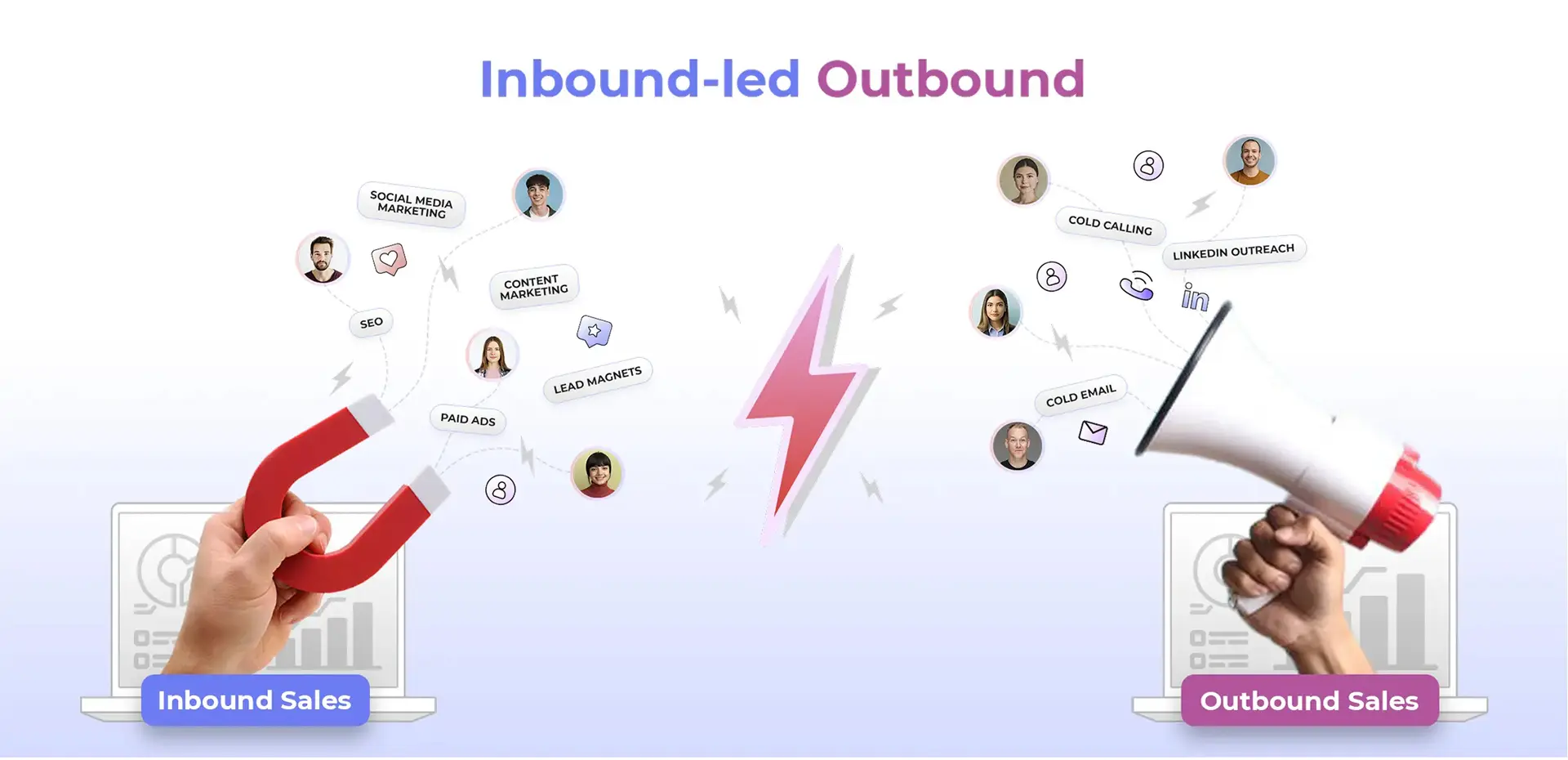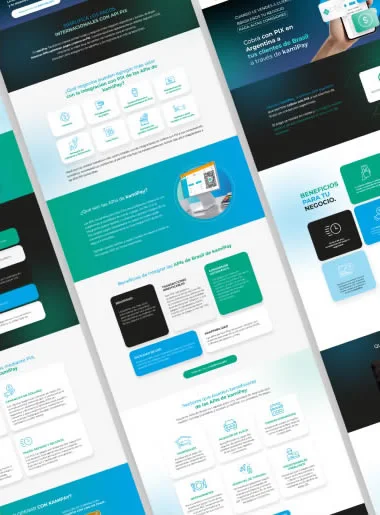
Marketing and sales teams today face a huge challenge: acquiring more customers in a world full of information, competition, and distractions. There are three key practices that, when understood and applied together, can truly change the game: Inbound, Outbound, and Inbound-Led Outbound.
Let’s break them down:
1. Inbound: When the Customer Comes to You
Inbound is everything you do to make the customer find you on their own.
- Examples: a blog post ranking in Google, a LinkedIn post answering a common question, or a paid social ad appearing at the right moment.
- In simple terms: you plant content and campaigns so people can discover you.
According to a 2024 Databox survey, over 30% of B2B companies say Inbound is their main source of qualified leads.
2. Outbound: When You Go After the Customer
Outbound is proactive prospecting.
- Examples: a well-personalized cold email, a LinkedIn message, or a call to a prospect who fits your ideal customer profile.
- Today, this process is much more efficient thanks to AI-powered tools like Clay, SmartLead, or HeyReach, which allow you to find and contact prospects in seconds instead of spending hours manually.
A 2025 study by Outreach.io shows that 43% of sales teams now use a hybrid model with digital and automated Outbound because it’s faster and more scalable.
3. Inbound-Led Outbound: The Winning Combination
This hybrid approach combines the best of both worlds. How it works:
- The prospect leaves a signal of interest (e.g., downloads an eBook, visits your website, comments on a post.
- That signal is detected almost in real time.
- A personalized Outbound touch is triggered automatically (e.g., an email from a sales rep, a LinkedIn message).
Think of it like a soccer game: the forward raises their hand asking for the pass, and the midfielder delivers it instantly.
RevPartners calls this model “Allbound” and shows that companies aligning Inbound and Outbound grow faster and convert better than those relying on just one approach.
Why Align All Three?
No funnel works in isolation:
- Inbound attracts.
- Outbound activates.
- Inbound-Led Outbound accelerates.
When they work together:
- You multiply touchpoints.
- You make better use of CRM data.
- Leads move faster through the funnel and become customers.
A Simple Example
Imagine a bank looking to offer loans or leasing to SMEs that want to upgrade their machinery or technology:
- Inbound: The bank publishes a blog post titled “How to Finance Your Machinery Upgrade Without Affecting Cash Flow”, and Qm launches a Google Ads campaign targeting SME owners actively searching for financing options.
- Outbound: At Qm, we run the campaigns alongside the sales team: we use tools like Clay to identify CFOs and SME owners on LinkedIn, and with SmartLead we automate personalized emails highlighting success stories of similar companies that have already benefited from leasing solutions.
- Inbound-Led Outbound: When a user downloads a guide on “Leasing Options for SMEs 2025”, that signal is detected almost in real time. An automated, personalized message is sent, inviting them to a meeting to discuss their case and review a tailored payment simulation.
Result: leads that already showed interest are leveraged more efficiently, sales cycles are shortened, and the bank closes more high-quality SME deals.
The future of prospecting isn’t about choosing between Inbound or Outbound—it’s about smartly aligning them and making the most of data and technology.
Companies that are already doing this are achieving:
- Quicker responses
- More effective campaigns
- And most importantly: more customers turning into buyers
At Qm, we have extensive experience helping companies across multiple industries integrate these three approaches into their Go-to-Market (GTM) strategy. Our experience is clear: when all funnels are aligned, lead generation stops being a headache and becomes a true engine for growth.
Want to explore how to apply Inbound, Outbound, and Inbound-Led Outbound in your company? At QM, we can guide you in designing and executing this strategy.
SCHEDULE A CALLFrequently Asked Questions (FAQs)
What is B2B Inbound Marketing?
Inbound marketing is the practice of attracting prospects organically or through paid channels using content, SEO, social media, and ads. The goal is for customers to come to your company out of genuine interest.
What is B2B Outbound Marketing?
Outbound marketing is active prospecting: the company reaches out directly to potential customers via emails, calls, or LinkedIn messages. Today, it’s enhanced with AI tools like Clay, SmartLead, or HeyReach.
What does Inbound-Led Outbound mean?
It’s a hybrid strategy that combines both approaches. When a prospect shows interest (e.g., downloads an eBook, visits your website, opens an email), that signal is detected and triggers a personalized outbound contact almost in real time.
Why should you align Inbound, Outbound, and Inbound-Led Outbound?
Together, they create more touchpoints, make better use of CRM data, and increase the chances of converting a lead into a customer.
What’s the difference between Inbound and Outbound
Inbound attracts customers to your company, while Outbound actively goes out to find them. Both are effective, but their true power lies in combining them.
What are the benefits of Inbound-Led Outbound?
It allows you to act on hot buying signals, shorten the sales cycle, and increase conversion rates.
How can a bank apply these practices in B2B?
A bank can attract SMEs with financing content (Inbound), identify them on LinkedIn with prospecting tools (Outbound), and when an SME shows interest—e.g., by downloading a leasing guide—trigger an immediate, personalized contact (Inbound-Led Outbound).
